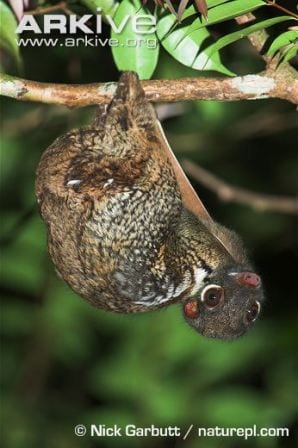Specimen of the Week: Week 123
By Emma-Louise Nicholls, on 17 February 2014
 As a palaeontologist, I spend a lot of time thinking about how species known only from the fossil record may have looked in life. Take Helicoprion for example. WHAT is THAT about? We currently have no way of knowing for sure where that tooth whorl goes on Helicoprion, so we make an educated guess. The result of which is the weirdest shark’s mouth the world has ever seen. Surrounded by skeletons at the Grant Museum, I sometimes wonder if we would ever have arrived at an accurate morphological reconstruction of some of the species, whose skeletons don’t really resemble the living thing. The species featured this week, is one such animal. This week’s Specimen of the Week is…
As a palaeontologist, I spend a lot of time thinking about how species known only from the fossil record may have looked in life. Take Helicoprion for example. WHAT is THAT about? We currently have no way of knowing for sure where that tooth whorl goes on Helicoprion, so we make an educated guess. The result of which is the weirdest shark’s mouth the world has ever seen. Surrounded by skeletons at the Grant Museum, I sometimes wonder if we would ever have arrived at an accurate morphological reconstruction of some of the species, whose skeletons don’t really resemble the living thing. The species featured this week, is one such animal. This week’s Specimen of the Week is…
**The colugo**
1) The colugo is also called the flying lemur, although just to be clear it is neither a lemur and nor can it fly. There are two extant species of colugo; the Philippine colugo (Cynocephalus volans) and the Malayan colugo (Galeopterus variegates). The species featured here, that lives at the Grant Museum is the Malayan colugo. The colugo normally has grey or green-grey fur (see image below) with dark banding across the back. The Malayan colugo is the smaller of the two species and grows up to 63 cm in length, including the tail, and normally weighs between 0.9 and 1.3 kg.
2) The Malayan colugo inhabits both primary and secondary forests and spends its day hiding in holes in trees or hanging amongst the foliage. It will also inhabit man-made environments such as rubber and coconut plantations. Unfortunately, farmers don’t appreciate colugos eating the crops and fruits in their plantations, and so in these areas it is considered a pest. The colugo is also prone to being eaten by humans, and is considered a delicacy.
3) The colugo got its other name, flying lemur, from its gliding lifestyle. A flap of skin called a patagium stretches from each front foot to the corresponding back foot, making the colugo resemble a child’s kite. Using the patagium, the colugo can glide between trees over 100 m apart, with a loss of only about 10 m in elevation.
4) The Malayan colugo hails from Southeast Asia. They are found in the forest habitats of Indonesia, Thailand, Malaysia, and Singapore. They are nocturnal animals and spend their nights foraging for young shoots and leaves to eat.
5) Recent molecular research carried out at Penn State University has suggested that the Dermoptera, which is the group containing the two species of colugo, is the closest living group to the primates. Previously, it was thought to be the Scandentia, which is the group that comprises Asian tree shrews. The debate continues, but I’d definitely rather be a cute fluffy kite than a rodent.
Emma-Louise Nicholls is the Curatorial Assistant at the Grant Museum of Zoology
.
 Close
Close




